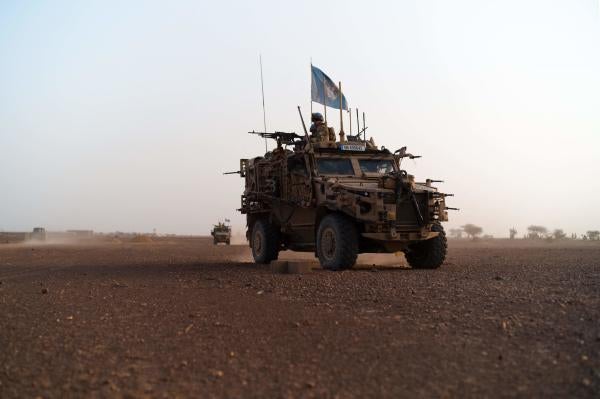Lire la version en français
It’s 2034. The war, now long over, still returns as nightmares to those old enough to have lived through it, but for the children born in the hopeful years since, it’s not even a memory.
They sleep soundly at night, and by day, they run through the fields and forests on the edge of the village as carefree as kids anywhere – laughing, shouting, playing tag or hide-and-seek.
Until the day one boy sees something under a bush. It looks bit like a soda can maybe, he thinks, but it has petals sticking up from one end of it. He calls his friend to come and pokes the object with his foot to turn it over.
There’s a flash and deafening crack. Hundreds of small metal pellets shoot out in all directions.
When the ambulance arrives, there’s nothing they can do for the boy. As for the girl who was walking toward him, she’ll survive, but she’ll be undergoing a series of reconstructive surgeries on her face for years.
They were both eight years old. They were never even alive during the war, but they were victims of it anyway, because the warring militaries used cluster munitions.
This may be fiction, but the danger is very real. Cluster munitions are weapons delivered by artillery, rockets, missiles, and aircraft that open in mid-air and disperse dozens or hundreds of bomblets over a wide area – like the size of a football field or two. It’s nearly impossible for those firing them to aim for military targets without causing civilian causalities, as well. In short, using them is almost guaranteed to be a war crime.
What’s more, many of these bomblets fail to explode on initial use, sitting there like landmines for years.
There is an international convention against cluster munitions; 123 countries have signed or ratified it, but Russia, Ukraine, and the United States are three that have not.
I mention Russia and Ukraine, because both are using cluster munitions in Ukraine today, harming and killing civilians.
I mention the United States because the US government is reportedly close to deciding whether to transfer stockpiled cluster munitions to Ukraine. The decision now rests with Joe Biden.
Many readers will understand foreign governments wanting to help Ukraine defend itself against Russia's atrocity-ridden invasion and occupation of Ukraine, driven by Vladimir Putin, a man who is, after all, wanted by the International Criminal Court for mass abductions of Ukrainian children.
But if the goal of this support is a free Ukraine, where children can grow up in safety and security – where they can run though the fields and forests like children should be able to do everywhere – then using cluster munitions is not the way to get there.










